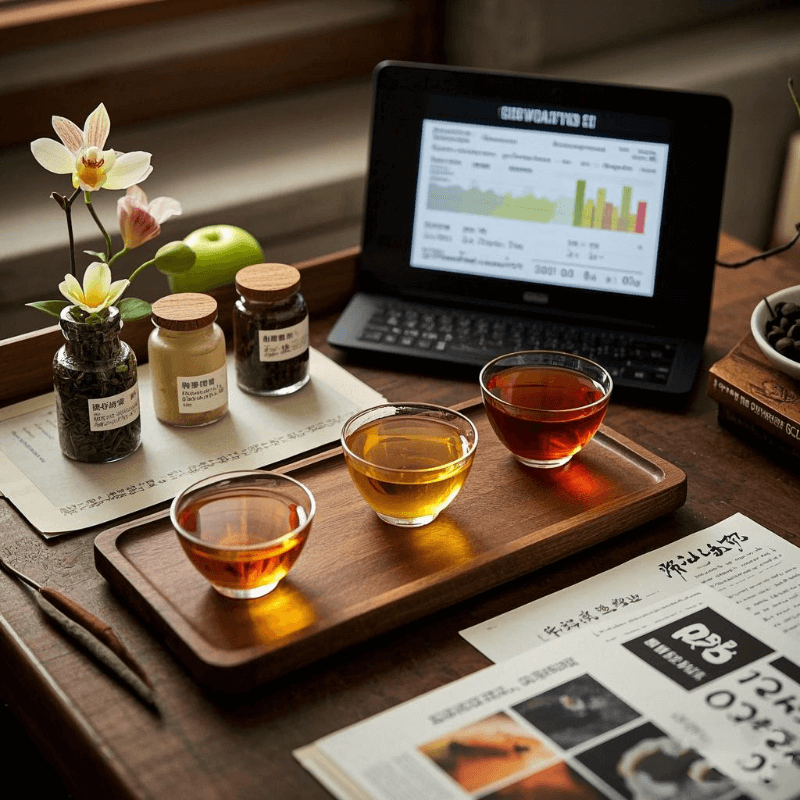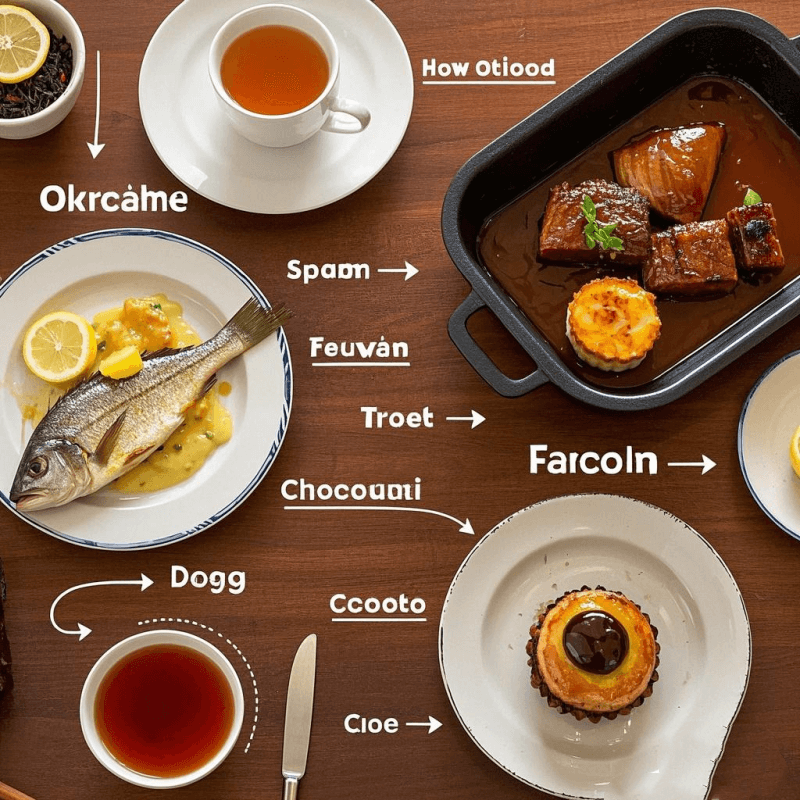In the world of specialty teas, oolong tea stands out for its complex flavor profile that can range from delicate floral notes to deep, roasted richness. But for many tea enthusiasts, the question remains: what does oolong tea taste like? Understanding its taste nuances isn’t just about satisfying curiosity—it’s about unlocking a more intentional tea-drinking experience. Whether you’re sipping it alone or pairing it with meals, grasping the subtleties of oolong’s flavor can transform your relationship with this semi-oxidized brew. Let’s dive into the sensory world of oolong tea, exploring its taste profiles, influencing factors, and perfect food pairings.
1. Introduction: Why Knowing What Oolong Tea Tastes Like Matters
In a culture where tea is both a daily ritual and a social experience, identifying what does oolong tea taste like serves practical purposes. For beginners, it helps navigate the overwhelming variety of oolongs; for connoisseurs, it deepens appreciation for regional and seasonal variations. Unlike green or black tea, oolong’s partial oxidation (10–80%) creates a flavor spectrum that can mimic anything from fresh peaches to toasted almonds. This versatility makes it a fascinating subject for taste exploration—and a challenging one for those new to the brew.
Consider this: a lightly oxidized Taiwanese high mountain oolong might greet your palate with bright orchid aromas and a crisp, melon-like finish, while a heavily roasted Wuyi rock tea could reveal notes of dark chocolate and spice. By decoding these flavors, you’ll learn not only what does oolong tea taste like but also how to select, brew, and pair it for maximum enjoyment.

2. What Does Oolong Tea Taste Like? Flavor Profiles Explained
The answer to what does oolong tea taste like begins with its oxidation level, which dictates the dominant flavor notes. Here’s a breakdown of the three primary flavor categories:
Lightly Oxidized Oolongs (10–30% Oxidation)
These oolongs are often described as “fresh” and “lively,” with prominent floral and fruity characteristics:
- Tieguanyin (Iron Goddess of Mercy): Exhibits a creamy mouthfeel with distinct orchid and pear notes.
- Alishan High Mountain Oolong: Bursting with aromas of wildflowers and green apple, finishing with a refreshing, slightly grassy tang.
- Baozhong Tea: Similar to green tea but smoother, with hints of jasmine and citrus.
Fun Fact: The light oxidation process preserves more of the tea leaf’s natural chlorophyll, contributing to these fresh, vegetal undertones.
Medium Oxidized Oolongs (30–60% Oxidation)
Here, you’ll find a balance between floral brightness and toasty depth:
- Phoenix Dan Cong: Known for its “hundred flowers” aroma, blending rose, lychee, and honeyed sweetness.
- Da Yu Ling Oolong: A Taiwanese classic with notes of ripe peach, caramel, and a subtle mineral finish.
- Anxi Tieguanyin (roasted variant): Lightly roasted to develop nutty, caramelized flavors while retaining some floral essence.
Heavily Oxidized Oolongs (60–80% Oxidation)
These oolongs are rich, bold, and often compared to black tea but with more complexity:
- Da Hong Pao (Big Red Robe): A legendary Wuyi rock tea with flavors of dark chocolate, cinnamon, and smoky oak.
- Dongfang Meiren (Oriental Beauty): Infused with honey and ripe berry notes due to leafhopper activity during growth.
- Shui Jin Gui (Golden Water Turtle): Robust and full-bodied, with hints of coffee and spice.
Expert Tip: The answer to what does oolong tea taste like also depends on its origin. Fujian oolongs often have a mineral “rock taste,” while Taiwanese oolongs lean sweeter and fruitier.
3. Factors That Influence the Taste of Oolong Tea
Several elements shape an oolong’s flavor, making each cup a unique sensory experience:
Terroir and Cultivar
- Altitude: High-mountain oolongs (e.g., Alishan) develop delicate flavors due to slow growth in cool, misty climates.
- Soil Composition: Wuyi Mountain’s rocky soils impart a distinct minerality to teas like Da Hong Pao.
- Tea Plant Variety: Cultivars like Tieguanyin and Fenghuang Dancong have inherent flavor traits, much like grape varieties in wine.
Oxidation and Processing
- Oxidation Control: Even a 10% difference in oxidation can shift flavors from green apple to caramel.
- Roasting: Repeated roasting (e.g., in Wuyi Yancha) adds layers of toast, spice, or smoke.
- Picking Time: Spring-harvested leaves tend to be sweeter, while autumn picks may be more aromatic.
Brewing Method
- Water Temperature: Light oolongs prefer 175–185°F (79–85°C) to preserve freshness, while dark oolongs thrive at 195–205°F (90–96°C).
- Steeping Time: Shorter steeps (1–2 minutes) highlight floral notes, while longer steeps extract deeper, more astringent flavors.
- Vessel Material: Yixing clay teapots can enhance the smoothness of roasted oolongs, while glassware showcases the clarity of light oolongs.
4. How to Pair Oolong Tea with the Right Foods
Understanding what does oolong tea taste like is key to mastering food pairings. Here’s a guide to harmonious combinations:

Light Oolongs: Fresh and Floral
- Food Pairings:
- Pastries with light fillings (vanilla scones, lemon tarts)
- Fresh fruit salads or tropical desserts
- Seafood dishes like steamed fish or shrimp spring rolls
- Why It Works: The tea’s bright acidity cuts through richness while its floral notes complement delicate flavors.
Try This: Pair Alishan High Mountain Oolong with mango sticky rice—the tea’s green apple notes will enhance the fruit’s sweetness.
Medium Oolongs: Balanced and Toasty
- Food Pairings:
- Roasted poultry (duck, turkey) with herbal rubs
- Nuts and caramel-based desserts (pecan pie, toffee)
- Aged cheeses like gouda or gruyère
- Why It Works: The tea’s moderate body and nutty undertones create a symphony with roasted and aged flavors.
Expert Suggestion: Serve Phoenix Dan Cong with Peking duck—the tea’s honeyed sweetness will balance the dish’s rich, savory notes.
Heavy Oolongs: Bold and Robust
- Food Pairings:
- Braised meats (beef short ribs, pork belly)
- Dark chocolate desserts (mocha cake, truffles)
- Spiced dishes (curries, Sichuan cuisine)
- Why It Works: The tea’s full body and roasted flavors stand up to bold seasonings, while its tannins cleanse the palate.
Customer Favorite: Da Hong Pao paired with a dark chocolate and orange zest tart—a match praised for its balance of bitterness and sweetness.
5. Real User Impressions: How People Describe Oolong Tea Taste
To truly grasp what does oolong tea taste like, consider these authentic descriptions:
- “My first sip of Dongfang Meiren was like biting into a sun-ripened raspberry dipped in honey—so fruity yet elegant.” – Maria T., tea blogger
- “The Da Hong Pao from Wuyi Mountain tasted like a campfire in a cup—smoky, spicy, and surprisingly smooth.” – James L., coffee convert
- “Baozhong tea reminds me of walking through a jasmine garden on a dewy morning—fresh, light, and incredibly refreshing.” – Amara K., wellness coach
Data Point: A survey by Tea Enthusiast Magazine found that 72% of respondents described oolong tea as “more complex” than other teas, with 41% citing its ability to evolve through multiple steeps as a key appeal.
6. Tips to Fully Enjoy the Taste of Oolong Tea at Home
Elevate your tasting experience with these practical tips:
- Invest in Good Water: Filtered or spring water free of chlorine enhances flavor clarity.
- Practice Gongfu Cha: Use a small gaiwan (lidded bowl) for multiple short steeps—oolongs can be steeped 5–7 times, each offering new flavor layers.
- Temperature Control: Use a thermometer to avoid overheating, which can burn leaves and create bitterness.
- Mindful Tasting: Take small sips, allowing the tea to coat your palate before swallowing to detect subtle notes.
- Keep a Tasting Journal: Record each oolong’s origin, oxidation level, and your flavor impressions to track preferences.
7. Conclusion: Appreciate the Unique Taste of Oolong Tea in Every Sip
As we’ve explored, the answer to what does oolong tea taste like is as diverse as the tea itself—from the delicate floral notes of a Taiwanese high mountain oolong to the bold, roasted character of a Wuyi rock tea. By understanding these flavor profiles and their influencing factors, you’re equipped to choose, brew, and pair oolong tea with confidence.
Remember, every cup of oolong is a journey—one that rewards patience and curiosity. Whether you’re savoring a light oolong with breakfast pastries or enjoying a heavily roasted variety after a rich meal, the key is to approach each sip with an open palate. Discover the subtle beauty of oolong tea with our premium leaves, and let your taste buds guide you through this extraordinary tea’s many dimensions. In the world of oolong, the question isn’t just what does oolong tea taste like—it’s how will you experience its taste next?

Pingback: Oolong Tea Taste: Uncover Flavor Layers & Tasting Secrets